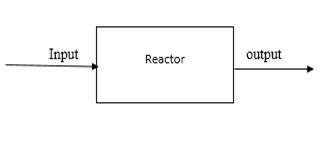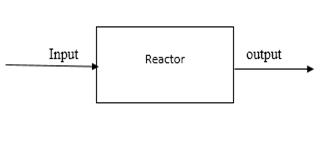
(a)
Interpretation:
Flow chart for the process should be prepared. Also, the degree of freedom for the process should be determined.
Concept introduction:
Flow chart for the process is determined on the values of input and output that is the amount of feed entered in the reactor and product formed also helps to predict the amount accumulated during formation of product.
This gives the relation,which is defined as,
Input-output = Accumulation.
The flow sheet for the process is shown below,

For a single reaction system, the final moles of each of the components present, can be estimated by the equation:
Here,
Mole fraction
Here,
(b)
Interpretation:
The set of equation identifying the process for the given data should be determined.
Concept introduction:
Mole fraction
Here,
Volumetric flow rate is defined as the product of area for the flow and cross sectional velocity having unit of cubic feet/second.
(c)
Interpretation:
The values of all equations calculated in part (b) should be calculated.
Concept introduction:
Mole fraction
Here,
Volumetric flow rate is defined as the product of area for the flow and cross sectional velocity having unit of cubic feet/second.
(d)
Interpretation:
The value of total heat requirements in kW for methane and oxygen preheater should be determined. Also, the value of temperature attained in convertor should be calculated.
Concept introduction:
The amount of heat transferred is
The enthalpies of reactants and products depends on the heat capacity and temperature.
(f)
Interpretation:
The additional steps can be included in the absorber and stripper off gas should be explained.
Concept introduction:
Flow chart for the process is determined on the values of input and output that is the amount of feed entered in the reactor and product is formed also helps to predict the amount accumulated during formation of product.
This gives the relation, which is defined as
Input-output = Accumulation.
The flow sheet for the process is shown below,

Trending nowThis is a popular solution!

Chapter 9 Solutions
ELEM.PRIN.OF CHEM.PROCESS-ACCESS
- For a titration of 40.00 mL of 0.0500 M oxalic acid H2C2O4 with 0.1000 M KOH, calculate the pH at each of the following volume of KOH used in the titration: 1) before the titration begin;2) 15 mL; 3) 20 mL; 4) 25 mL; 5) 40 mL; 6) 50 mL. Ka1 = 5.90×10^-2, Ka2 = 6.50×10^-5 for oxalic acid.arrow_forwardPredict the major organic product(s), if any, of the following reactions. Assume all reagents are in excess unless otherwise indicated.arrow_forwardPredict the major organic product(s), if any, of the following reactions. Assume all reagents are in excess unless otherwise indicated.arrow_forward
- How many signals would you expect to find in the 1 H NMR spectrum of each given compound? Part 1 of 2 2 Part 2 of 2 HO 5 ☑ Х IIIIII***** §arrow_forwardA carbonyl compound has a molecular ion with a m/z of 86. The mass spectra of this compound also has a base peak with a m/z of 57. Draw the correct structure of this molecule. Drawingarrow_forwardCan you draw this using Lewis dot structures and full structures in the same way they are so that I can better visualize them and then determine resonance?arrow_forward
- Synthesize the following compound from cyclohexanol, ethanol, and any other needed reagentsarrow_forwardFor a titration of 20.00 mL of 0.0500 M H2SO4 with 0.100 M KOH, calculate the pH at each of the following volume of KOH used in the titration: 1) before the titration begin; 2) 10.00 mL; 3) 20.00 mL; 4) 30.00 mL. Ka2 = 1.20×10-2 for H2SO4.arrow_forwardCurved arrows are used to illustrate the flow of electrons. Using the provided starting and product structures, draw the curved electron-pushing arrows for the following reaction or mechanistic step(s) Be sure to account for all bond-breaking and bond-making steps Problem 73 of 10 Drawing Amows ro HO Donearrow_forward
- 12. Synthesize the following target molecules (TMs) using the specified starting materials. .CI a) HO3S SM TM b) HO- SMarrow_forwardFor a titration of 20.00 mL of 0.0500 M H2SO4 with 0.100 M KOH, calculate the pH at each of the following volume of KOH used in the titration: 1) before the titration begin; 2) 10.00 mL; 3) 20.00 mL; 4) 30.00 mL. Ka2 = 1.20×10-2 for H2SO4.arrow_forwardWrite the systematic name of each organic molecule: structure name show work. don't give Ai generated solutionarrow_forward
 Principles of Modern ChemistryChemistryISBN:9781305079113Author:David W. Oxtoby, H. Pat Gillis, Laurie J. ButlerPublisher:Cengage Learning
Principles of Modern ChemistryChemistryISBN:9781305079113Author:David W. Oxtoby, H. Pat Gillis, Laurie J. ButlerPublisher:Cengage Learning
